914/4 Alternator Removal & Replacement
By McMark
Removing the alternator with the engine in the car is a challenging task the first time through. But hopefully this guide will make it a little easier. It takes me about 1 hour to remove and replace without even jacking up the car. B)
Tools you'll need:
- 6mm allen wrench or socket
- Large screwdriver with a square shaft
- 8mm socket or wrench
- 10mm socket or wrench
- 13mm socket or wrench
- 21mm socket or wrench
- Impact gun (not necessary)
Start by removing the negative battery cable.
Then open the engine bay, grab a largish screw driver and remove these two tin screws. And using a 6mm allen wrench (or even better, a socket) remove the adjustment screw. Careful of the special nut on the back. Losing those is a PITA.
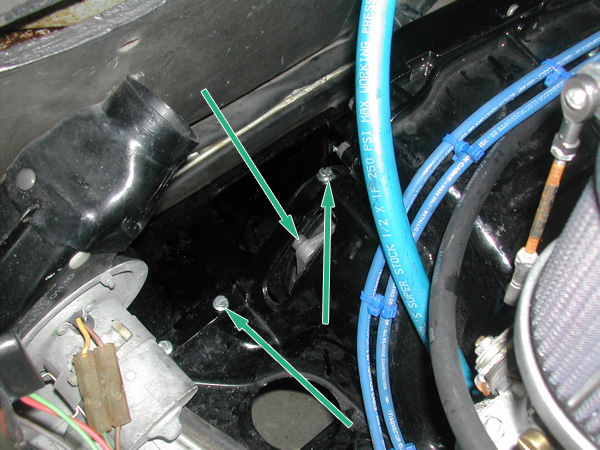
Grab a 13mm wrench (ratcheting wrenches are nice here) and remove this nut from the alternator mount bracket. (BTW, you should be loosening this bolt whenever you replace or tighten your belt.) Also loosen the clamp on the cooling boot and push it off of the backing plate.
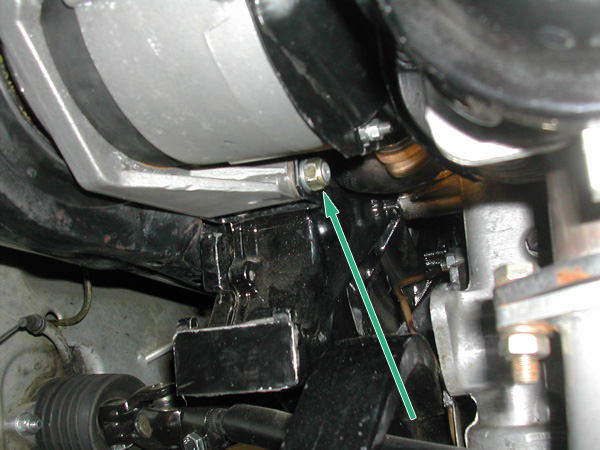
Now that the alternator is loose, remove the belt and feel around near the alternator pulley for this bolt and remove it.
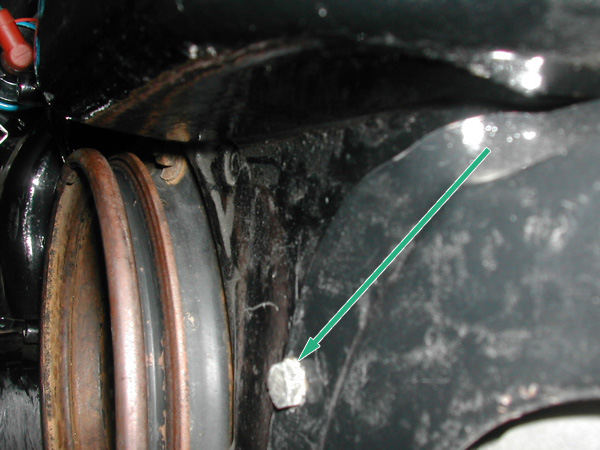
Take your large screwdriver (or possibly 10mm wrench/socket) under the car and remove the tin screw just in front of the alternator. It's the only one you access from under the car, and it's just in front of the alternator. The back side of this screw is pictured below.
Next remove the main pivot bolt (remember the nut you removed with the 13mm wrench) by knocking it towards the front of the car. Reach in the engine bay and pull the bolt completely free. The bolt head is pictured below.
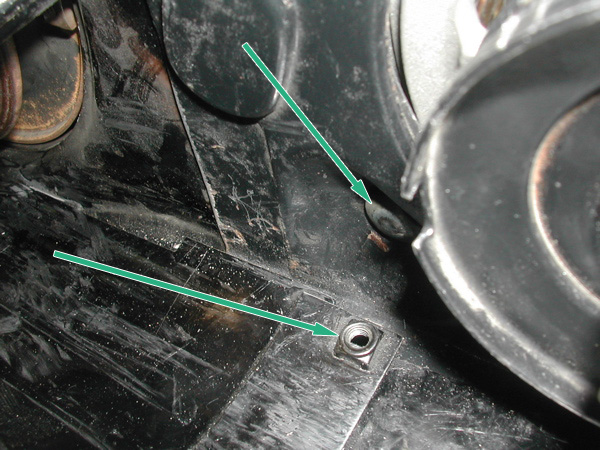
This is a special bolt and is often replaced with an improper substitute. This bolt has a D shaped head and (not visible) has a square shaft like a carriage bolt which keeps it from spinning when you're trying to remove the nut on the other end. ;)
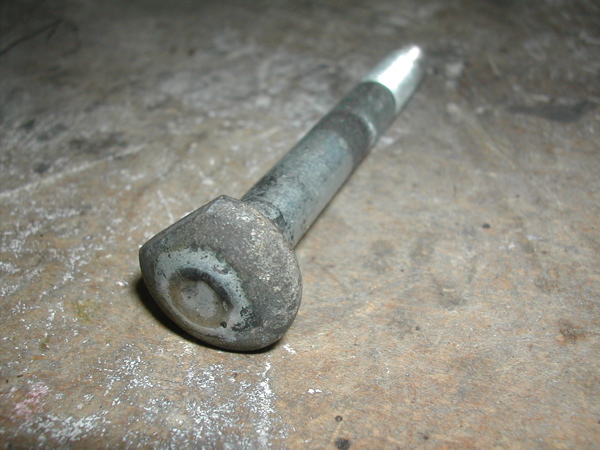
The alternator and the surrounding tin are now loose. Remove them by lowering them out. This is the tricky part. I always lower it a bit and then try to pivot the back towards the ground. The alternator ends up coming out like this (you can see the motor mount bar in the bottom left corner and the valve cover in the top right):
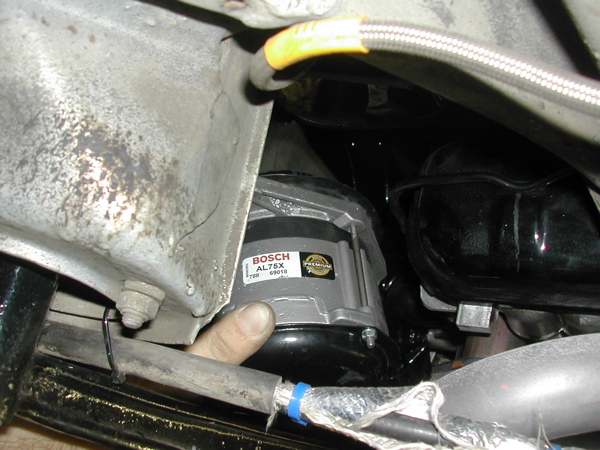
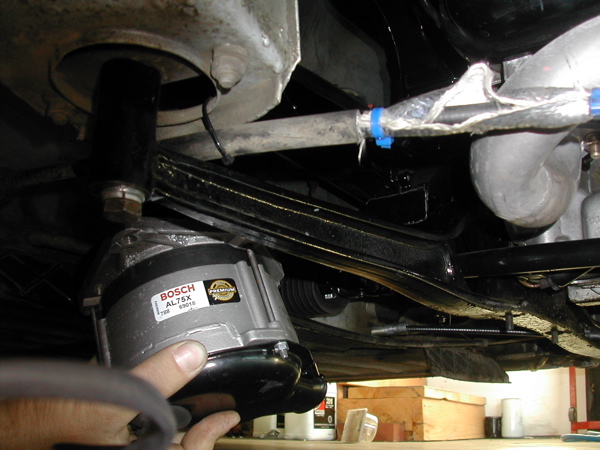
Here is a picture of the alternator mount by itself. The two bolts holding it in place can be loosened to move the alternator forward or backward slightly for alignment. Also notice the square hole at the front. This matches with the special bolt mentioned previously.
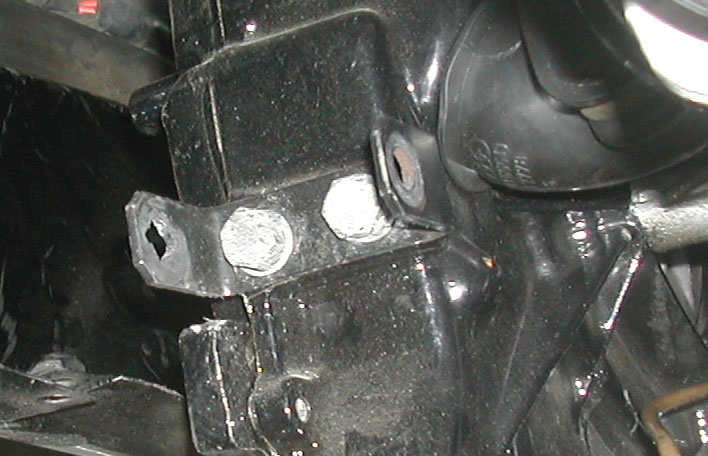
Remove the cable that runs from the alternator to the starter (there is a nut on the starter). BTW, this is the cable that carries power from the alternator to the battery. Also remove the three prong plug from the relay board. Feed these wires though to the underside of the car and pull the alternator completely out.
Swap your wiring to the new alternator by removing the rear cover. Remove these three nuts with an 8mm wrench.
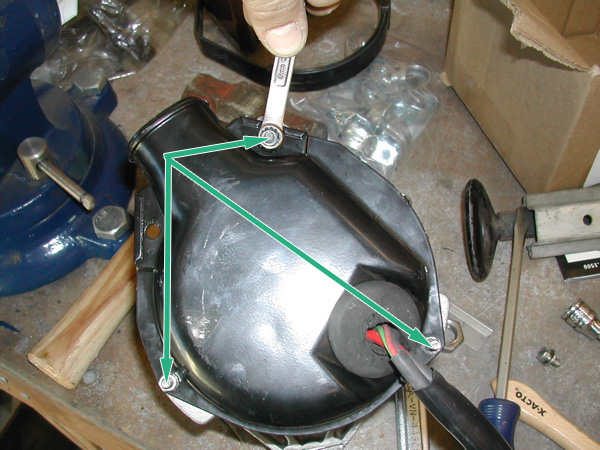
Pull back the plate and remove the three prong plug by pulling and undo the nut to remove the big red wire. The stud that this big red wire bolts to is often too long and touches the cover plate. THIS IS VERY BAD AND WILL CAUSE DAMAGE. Check the length of this stud on your new alternator and make sure it is short enough. If it is not, file it, grind it, or cut it.
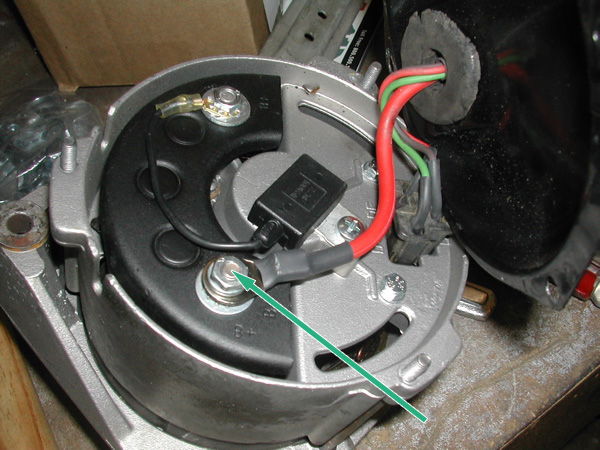
This is a great time to get a rebuilt wiring harness from Jeff Bowlsby. Old wiring limits power flow and can reduce the output of your expensive new alternator. Reinstall the wiring harness, double check the B+ post length, and bolt the rear cover into place. Make sure that the cooling air inlet is close to the pivot shaft. (see the picture above).
New/Rebuilt alternators do not come with a pulley so you'll have to remove your old one. An impact gun makes short work of this nut, using a 21mm socket. If you don't have air tools accessible (if you're on the side of the road, for example) you can place a screwdriver between the center shaft and one of the cutouts/teeth/notches like this. A screwdriver with a square shaft is probably necessary.
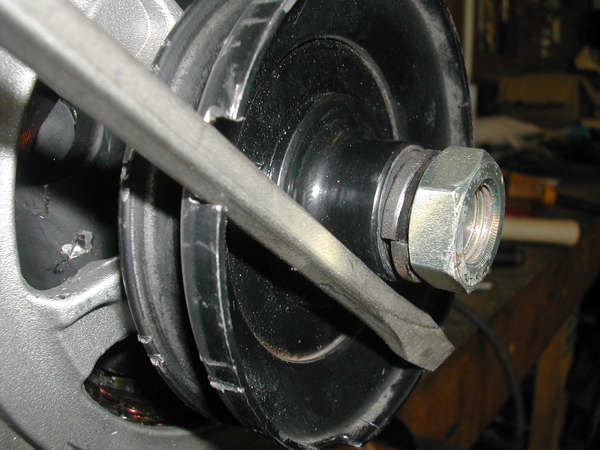
The pulley sometimes drops right off, and sometimes it takes some convincing. A three jaw puller is handy, but sometimes they DO NOT come off. I've bent a few, and even had one that turned inside out instead of coming off. A careful application of heat or some penetrating oil (WD-40 is not penetrating oil) can help.
Once you're ready to reinstall the pulley, make sure the key is in place.
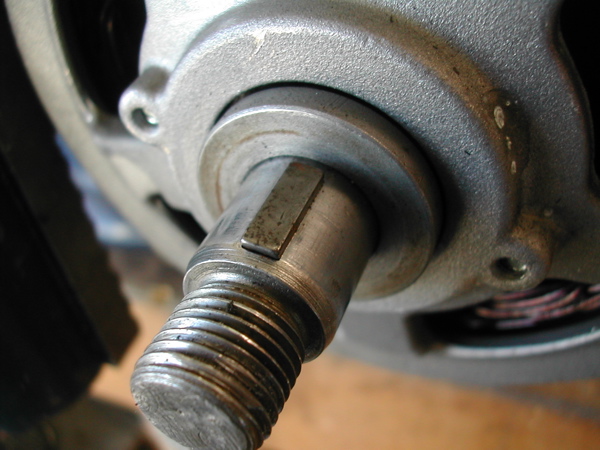
Slide the pulley into place. If it's tight you can carefully sand the inside bore to let it slip on easily. Some motor oil on the shaft and in the bore will help it go on as well as help it come off again later.
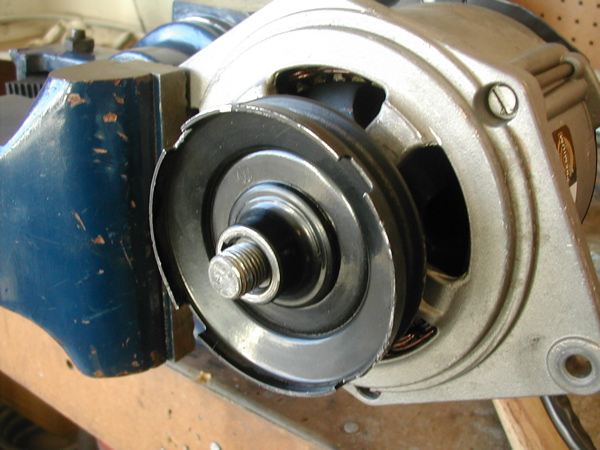
Next is a split lock washer. These can be flattened after some use. Your washer should look like this one. The 'beginning' should be offset from the 'end'.
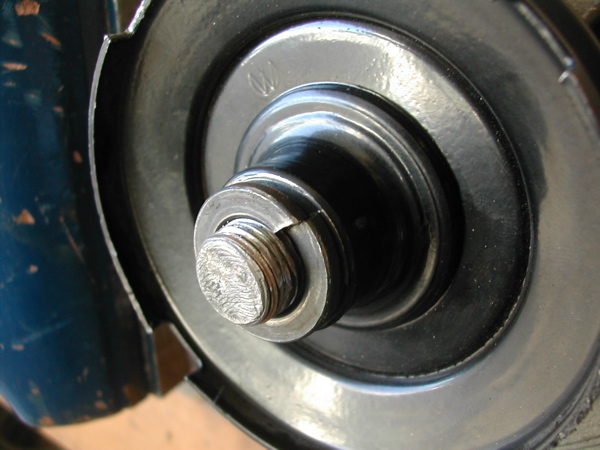
Finally, thread the nut on and torque it to 29 ft/lbs. A torque wrench and the screwdriver trick works well.
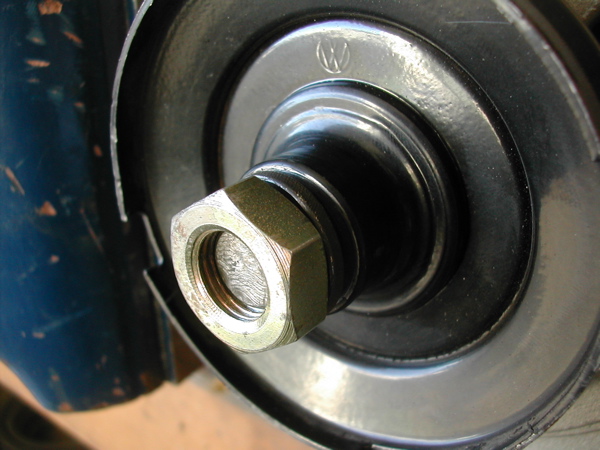
Okay, now we're ready to start reinstallation. First, a look at how the pieces will all fit together. You should have this neat sealing ring. Notice the 'dent'.
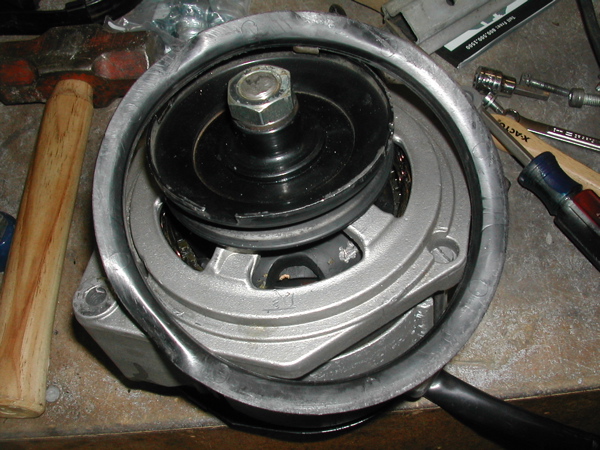
The dent will end up lining up with the pivot bolt, like this.
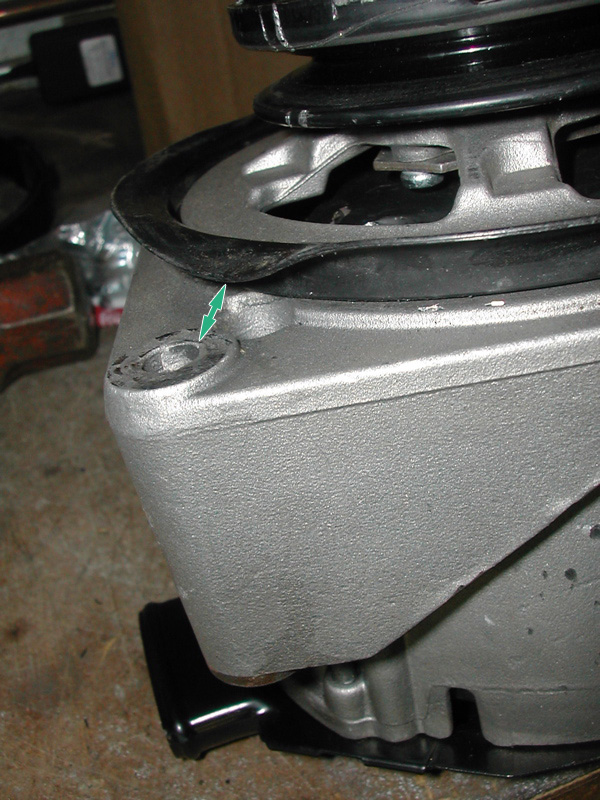
The tin fits over the top of everything like this.
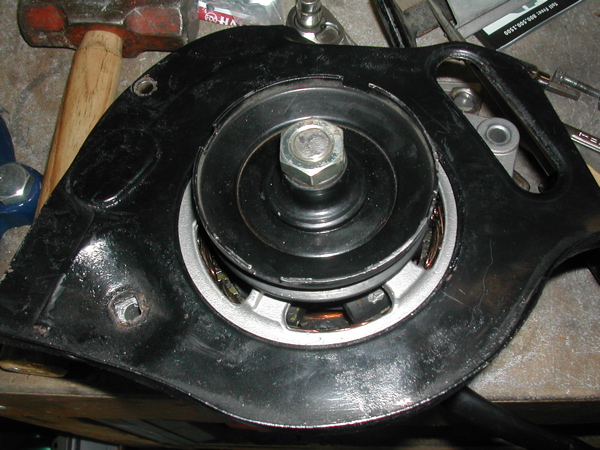
Now this will all fall out of place, but since you'll be installing this mostly 'blind', it's important to know where you need to be.
Leave the ring and the tin in place and lift them into place. Again, this is the worst part of this job and will take quite a bit a fiddling, fudging and cursing. Try to get the pulley up into place first and then pivot the back end up. Once you have it into place. Poke a spare, short bolt into the back of the pivot to keep it in place. Attach the tin next, by threading the top tin screws into place first, and then the others. Don't tighten any of them down yet, in case something needs to move. Once the tin is in place then the pivot bolt will slide into place more easily. Wiggle the alternator back and forth as necessary to make the bolt slide into place. As you push it in, you will knock the temporary short bolt out the back. Once the lower bolt is in place, pivot the alternator and attach the upper bolt and special nut. This one is a PITA. Some needle-nose locking pliers will help you maneuver the nut. Re-attach the cooling boot, tighten the tin screws (two on top, one on the front, and one on the bottom), make sure the plastic ring is in place by feel, install the belt, tighten the belt and lock down the top bolt, and finally lock down the bottom nut (make sure the D bolt is oriented correctly). Run the wiring back into place and hook it up. Reattach the negative battery terminal and after quickly double checking everything, start the car and check your volt meter, alternator light, or use a handheld volt meter on the battery. If you're not reading 13.6v or so, then something is old and corroded or failing. Check your wiring (new wiring is good), your voltage regulator, and your battery terminal connections.
Yer all done!
|
